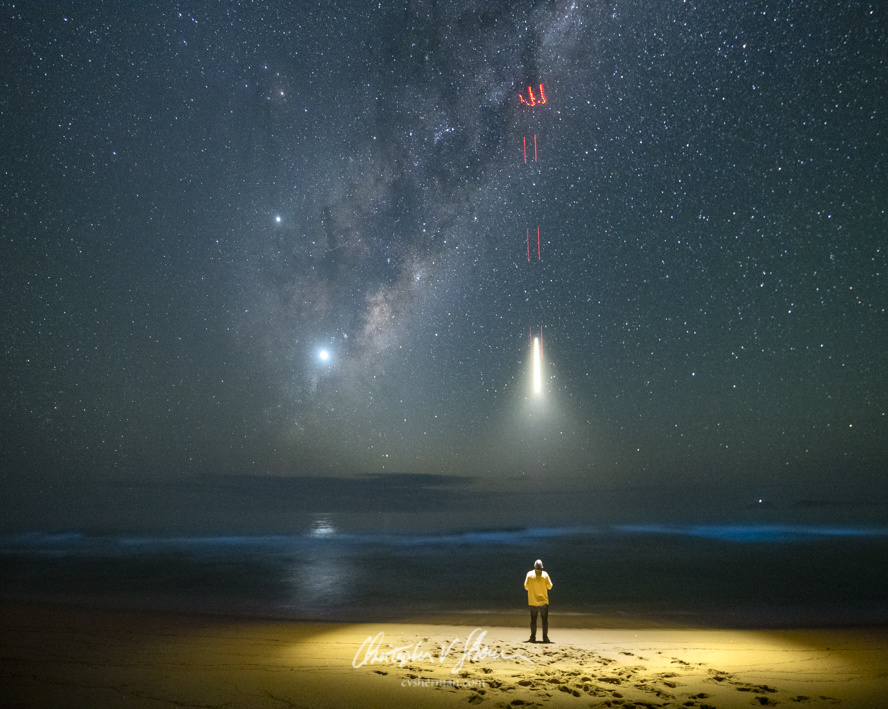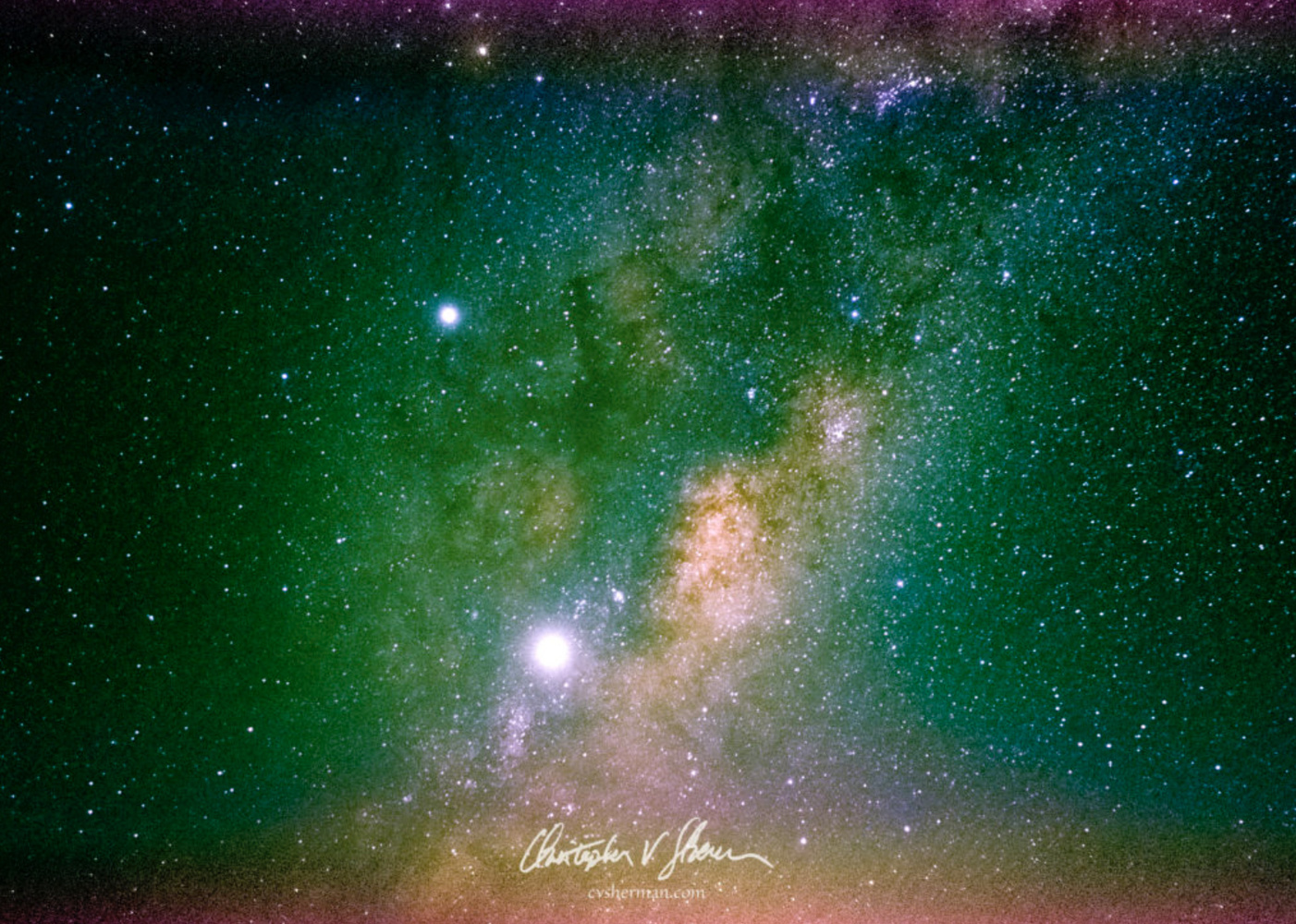Common sense would suggest that drones aren’t equipped for astrophotography. The slightest wind can ruin the long exposure needed to capture the Milky Way center, never mind the challenge of flying relatively blind at night. A DSLR mounted on a tripod properly situated on the ground is the only way the capture the Milky Way in all its glory, right? Maybe not.
Photographer Christopher Sherman, a self-described nomad who is primarily based in Austin, TX, recently set out to find out if his DJI Mavic 2 Pro could compete with his Nikon D850 in capturing the Milky Way core.
While we generally point our drone cameras down toward the ground, the Mavic 2 Pro does allow for a 20-degree uptilt, giving Sherman the opportunity to point his camera skyward as he set up on a beach at midnight in Eastern Australia.

Chris Sherman used his DJI Mavic 2 Pro drone to paint with light in creating this capture of the Milky Way on his Nikon D850 in Eastern Australia.
A light ground fog made things challenging for the Nikon D850, but Sherman was able to send the drone skyward, above the fog to get a clear view of the stars. A moonless night with little to no wind gave him ideal conditions for the Mavic 2 Pro to put its best foot forward.
It performed surprisingly well. Sherman was able to capture the core of the galaxy, as well as a meteor and two satellites using multiple 8-second exposures stacked in Sequator. I’m not sure the images would hold up printed at a large size, but they came out pretty well overall.

Chris Sherman created this image of the Milky Way center using his DJI Mavic 2 Pro drone.
Did the Mavic stand up to the D850? Not really. The latent fog obviously hurt the D850’s performance, but it seems obvious that given clear conditions, a good DSLR still would have made a better image than the Mavic.
That said, the Mavic’s ability to retain its stability during an 8-second exposure is really remarkable. It may not be better than a tripod, but it’s astoundingly good.
Have you tried your hand at astrophotography with a drone? What did you find to be your biggest challenge? Drop a comment below and tell us about your experience.
Images used with permission of Christopher Sherman.







Impressive outcomes! And I like how the location is described as the coast of "eastern Australia". The eastern Australian states have a combined coastline of about 13,000 km (8,000 mi) so really he could be just about anywhere!
I wonder if he got all the waivers required or is this another stupid thing that will put another nail in the drone coffin?
That's a good point.
Excuse my ignorance, but do you mean waivers for permission to fly? Does Oz have strict laws on that, because in most countries (particularly western) generally you're allowed to fly without any paperwork needed unless you go above a certain height or you're near an airport.
Not at night . U.S at least
Permit required on all council land....which means beaches
The biggest challenge about drone photography or video production is getting a permit. Seriously the mavic pro2 is so bloody good that anyone could make good photos from it.
To an extent. It's sensor can be quite noisy and dark images are quite unforgiving.